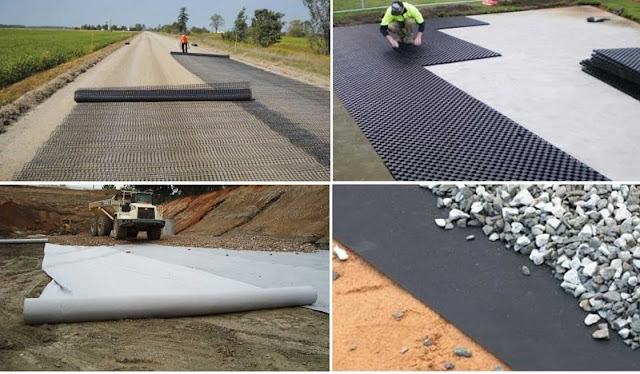Different Ways to Use Geotextile Fabrics
Geotextile is a type of Geosynthetics that has a porous nature. It's typically made of polypropylene and polyester. Geotextile fabrics are used to increase soil stability, control soil erosion, and aid drainage. They can be used in various applications within the civil construction, engineering, manufacturing and agricultural sectors. Many types of geotextile fabric exist, but woven and non-woven are the most common.
The Geotextile and Its Functions
The geotextile material use includes enhancing soils over which roads, dams and earth-retaining structures are constructed. Geotextiles are used for many purposes, whether they're woven or nonwoven. They include -
Separation
Separating different soils is essential when there are two types of soils in a certain area. Geotextile can be installed between soils to perform the separation function.
Also Read: What is the Breaking Strength of Geotextiles Made From Filament?
Geotextile can separate two dissimilar materials in such a situation, allowing the soil to have the desired properties. Geotextile separates soils because it prevents them from mixing when water is in the strata.
The non woven Geotextile uses include preventing the fine aggregate from filling in the gaps between the aggregates. The geotextiles used for this purpose have special thicknesses and permeabilities that prevent soil contamination. They also allow water to flow without impacting the strength and structural capability of the road. For separation, non-woven geotextile fabrics are generally the preferred choice.
Reinforcement
Geotextiles are used to improve soil properties based on several critical factors. The Geotextile uses include improving soil characteristics.
- Supporting Loads
- Restraints that restrict movement or friction
- Bearing failure plane alterations
The use of geotextiles on dams and roads that have been built over soils with extremely low grades allows steeper slopes.
Filtration
Filtration can also be achieved by using geotextile fabrics. These fabrics are used to allow for water movement in both directions. Both non-woven or woven geotextiles can be used to prevent fine aggregates from getting between the soil layers. Geotextiles can dissipate kinetic energy from the rise in capillary pressure of the groundwater and promote the flow of water lateral to the surface.
Therefore, choosing the right geotextile supplier in India is important to reap the maximum benefits from the product. Geotextile fabric can be used in both vertical and horizontal orientations. This allows for maximum drainage along curbs, roads, etc.
Sealing
The Geotextile can be impregnated with asphalt or any other mix to make it impenetrable. It helps to restrict the flow of liquids in both directions. Geotextile nonwoven fabric is the only material that can perform this function. The woven Geotextile can be used as various mechanisms like preventing soil contamination, reducing potable water losses due to contamination and evaporation, or stoping pollutants from affecting groundwater.
Protection
The geotextile multi usage includes protecting soils from erosion, which may occur in barriers due to repeated drawing down or currents. Installing a layer of Geotextile can help prevent fine materials from leaching. These materials can also be placed underwater to create a rock beach or as a mattress structure. They can be placed easily under the water.
There are many geotextile fabrics, but the two most popular are non-woven and woven fabrics. Both fabrics differ in many different ways. The two fabrics are different in many ways. A woven geotextile's tensile and load capacities are high, whereas the weight is used to measure a nonwoven fabric.
Conclusion
Shankar Techx is a leading FIBC bag manufacturer in India that also provides geotextile materials for diverse requirements. These Geotextiles made of non-woven materials are used primarily for drainage, filtration and separation. The Woven geotextiles, on the other hand, are ideal for stabilization or reinforcement. For more information, contact Shankar Techx or request a quote.
Also Visit: Know the Different Types of Filter Cloth and Their Common Applications


This comment has been removed by the author.
ReplyDeleteGeotextile is a highly durable and versatile material used in construction, landscaping, and erosion control. Geo fabric manufacturers in India provides excellent filtration, separation, and reinforcement, making it ideal for road construction, drainage systems, and soil stabilization. Its strong yet permeable fabric allows water to pass through while preventing soil erosion. Whether for commercial or residential projects, Geotextile enhances the longevity and efficiency of various applications. Its reliability and cost-effectiveness make it a preferred choice for engineers and contractors worldwide.
ReplyDelete